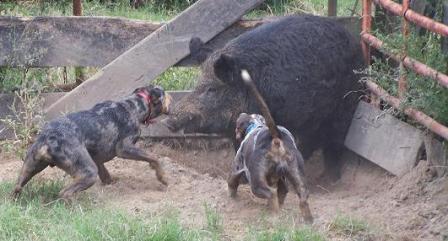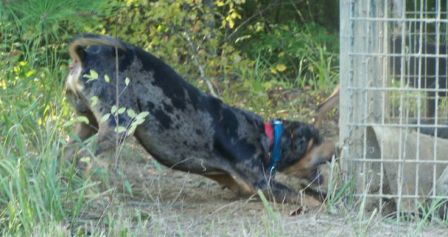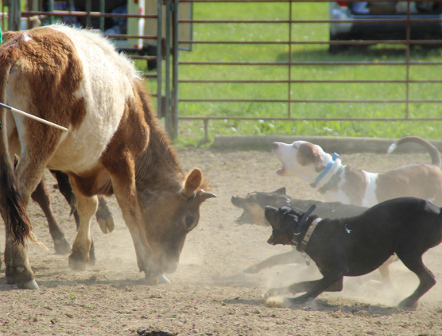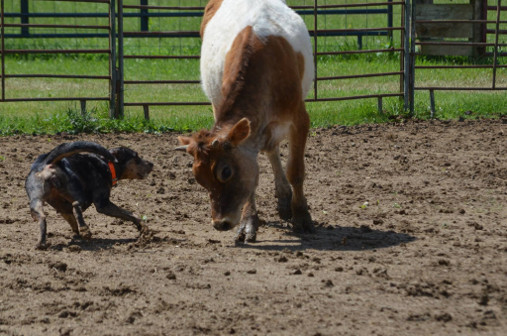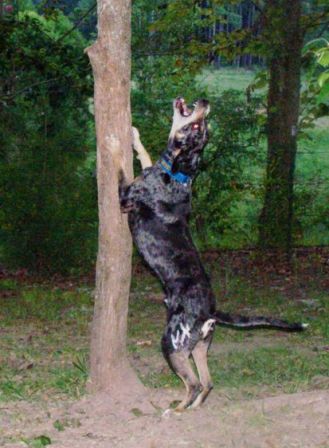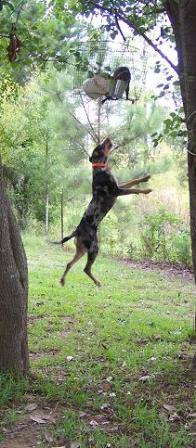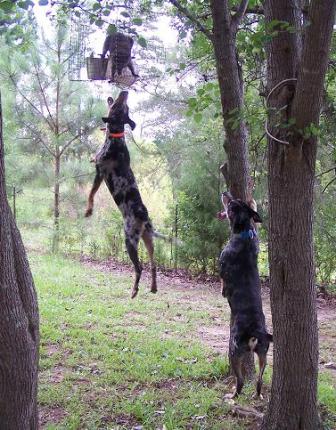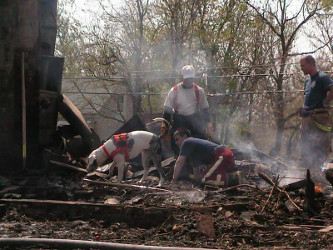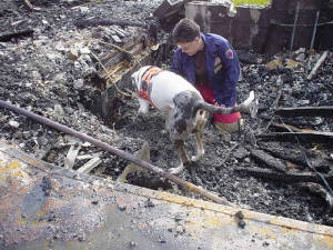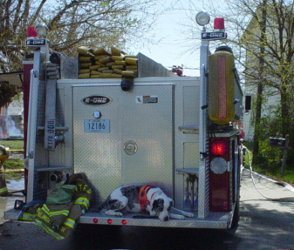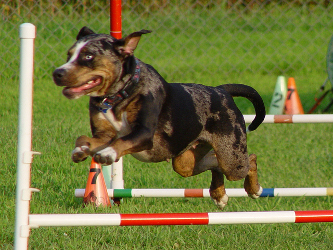| Herding/Baying -
The
breed developed when livestock were turned loose to fend for
themselves, then were rounded up for market or branding. People
from the bayous eked out a living from fishing, trapping, and running a
few wild hogs and cattle back in the woods. This stock was wild and
unruly, living off acorns and berries, not seeing humans only very
rarely. The hogs, particularly, were nearly impossible to drive.
They would turn on most herding dogs and fight rather than run. The
Catahoulas were essential to gathering and penning the pigs, and their
herding techniques are described by H. Ellen Whiteley, DVM in her
article "Catahoula Hog Dog Brings Back Memories of Home." Stragglers
were picked out by the dogs and forced into a "fight." Distressed
screams from the enraged boar brought the other hogs, especially the
lead boar, to the rescue with champing jaws and raised back-bristles.
The dogs then turned and ran, escaping the slashing tusks, just fast
enough to tantalize the hogs into continuing the chase, which soon led
directly into the waiting hog pens. The Catahoula deftly jumped the
back fence, and the hogs were trapped! Good dogs were worth their
weight in gold. A natural selection of breeding stock occurred, since
inept or slow specimens rarely made it through the first year of work.
Eventually, this herding style was adapted for cattle. |
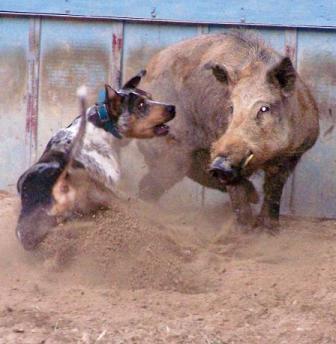
|


